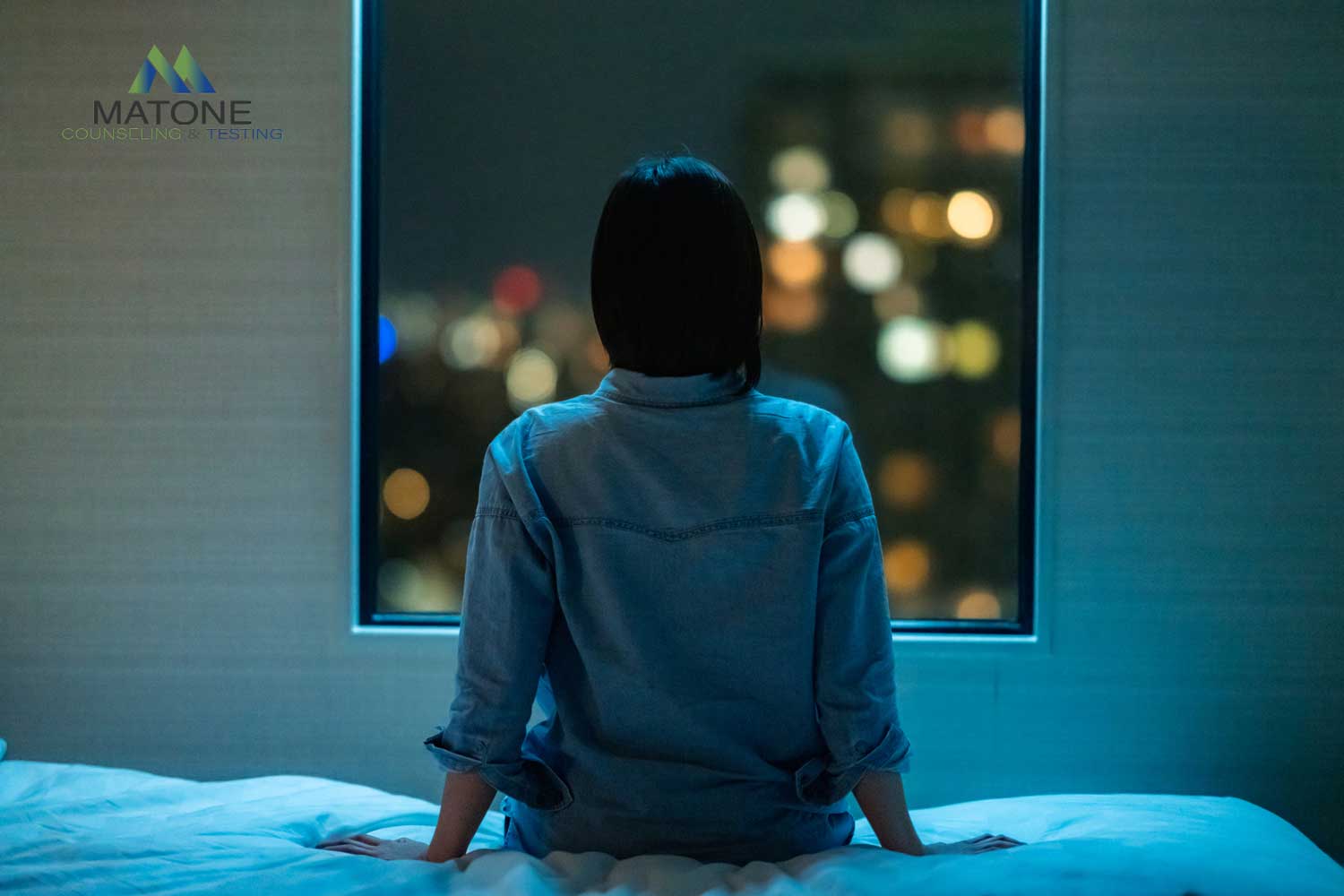How Sleep Can Help Cure Mental Illness
What traditional wisdom gets wrong about treating mental illnesses
At the beginning of the movie, High Fidelity, John Cusack’s character asks the rhetorical question: “Did I listen to pop music because I was miserable? Or was I miserable because I listened to pop music?”
This chicken-and-egg conundrum could be applied to sleep and mental illnesses: Am I not sleeping because I’m depressed, or am I depressed because I’m not sleeping?
Studies are starting to contend that illnesses like depression and anxiety could be triggered by sleeplessness, not the other way around. Comorbidities for depression, anxiety and insomnia are fairly common, and traditional wisdom has landed on treating depression and anxiety first. New studies suggest treating sleep first may provide greater soothing to mental illnesses.
This may seem like common sense to anyone who has felt the effects of a sleepless night or seen a baby deprived of nap time. Nevertheless, this blog post aims to explain what sleep disorders are, why you may want to treat it first, and what treatment looks like.
What are Sleep Disorders?
Sleep disorders stem from many different situations (see our diagnosis). Breathing-related sleep disorders, commonly referred to as sleep apnea, occur when airways become blocked during sleep, causing a disruption in the duration and depth of sleep. Circadian rhythm sleep disorders present as altered times of sleep that are incongruent with those that are socially or environmentally desired by the individual. People with this can be night owls, but experience consequences to job performance and social life. It can also stem from behavioral changes, like being employed on a night shift, parenting a newborn, or the sort of stress that leads to a behavioral shift that coincides with the times in which you catch your shut-eye. All of these can lead to insomnia.
So What is Insomnia?
The simplest way to categorize insomnia is that one feels “tired but wired.” According to the fifth edition of the Diagnostic and Statistical Manual (DSM-V-TR), the predominant complaint is that you can’t sleep even when you’re sleepy and, most importantly, this causes “significant distress or impairment in social, occupational, and other important areas of functioning.”
Sleep specialists see this more broadly as a disruption in your sleep of more than 30 minutes a night for over a month. This results in either fatigue or malaise and/or daytime sleepiness. It can also include impairment in concentration and memory; dysfunction in social or vocational performance; mood disturbance or irritability; dips in motivation and energy; an increase in mistakes; and headaches and G.I. symptoms. If you’re up more than 30 minutes a night for a month or more, and you’re fatigued or sleepy throughout the next day, let’s talk.
The Problem(s) with the DSM-V-TR Definition
First, diagnoses should always be caveated: people aren’t their diagnosis; they have symptoms of a diagnosis. Although receiving a diagnosis can bring some relief via normalizing the impact of distress from symptoms, a diagnosis can also become a way for folks to over-identify or feel stigmatized by the label of a diagnosis. Just because one has insomnia doesn’t mean one is an insomniac. Furthermore, insomnia is treatable without medications.
Second, the DSM-V-TR always has qualifiers and disqualifiers for clinicians to use when diagnosing, among which for insomnia the DSM-V-TR specifies that the insomnia not occur “exclusively during the course of another mental disorder (e.g. Major Depressive Disorder, Generalized Anxiety Disorder, a delirium).” Nor does it happen as a result of medication or substance use. Many people with sleep issues also have depression and are treating the depression first and not addressing their issues with sleep, which, research from neuroscience indicates, can lead to depression in the first place.
Now, the Meat of the Post
Studies by Andrea Goldstein and Matthew Walker and replicated by other researchers show that during Rapid Eye Movement (REM), which is the last stage of sleep, the neurochemical noradrenaline declines to its lowest level in a 24-hour period. Noradrenaline is associated with cognition, arousal and stress. Folks who experience full REM feel less symptoms of stress and depression, as shown both objectively in functional MRIs and subjectively in questionnaires; whereas, the opposite has been studied in folks with symptoms of depression, anxiety, and PTSD. Translation: REM helps regulate noradrenaline.
Goldstein and Walker’s study indicated that sleep deprivation resulted in a “60% amplification in reactivity of the amygdala in response to emotionally negative pictures, relative to a normal night of sleep.” They also found that they could predict which fMRI read outs hadn’t slept and link them to the subjective experiences of the subjects. Going further, they found that “sleep deprivation also increases sympathetic dominance of the autonomic nervous system, indexed by changes in heart rate variability […] the latter is important since this sympathetic bias is associated with a lack of flexibility and capacity to respond to emotional challenges, and has been positively associated with psychopathology.”
These studies also revealed declines in concentration, memory, and an overstimulation of the dopaminergic mesolimbic system, resulting in a susceptibility to reward-motivated behavior, like overeating. But that could be extended to any reward-motivated behavior, like scrolling through internet feeds, bing-watching television (all things one may do in the wee hours), and substance use disorders, which are present with sleep issues. Thus, research is now suggesting that sleep disorders may have existed prior to the use of substances.
Culturally, we think we need 7-8 hours of sleep a night. We also work a lot and sleep is often viewed as something to be caught up on. True, the population mode is 7.5 hours, but this can be misleading because people need different levels of sleep at different ages and genders. Teenagers require more than 8-11 hours and do best to sleep late; older adults need 7-8 hours. Thus, thinking one needs 7-8 hours every night might fill one with the sort of anxiety that causes loss of sleep.
The prevalence of insomnia in our population is estimated to be at 30-35% for acute insomnia and 10-15% for chronic insomnia. As sleepiness trickles through society, it impacts job performance and absenteeism, quality of life, and personal safety. It is tied to higher instances of hypertension, obesity, diabetes, cardiovascular disease, Alzheiumer’s and Dementia. Disturbed sleep is attributed with greater severity of mental illnesses and higher risks for suicide as well as greater instances of relapse and lower completion rates for therapy.
Why Does Treating Insomnia First Lead to Better Results?
The more balanced one’s body is the easier it is to raise awareness and become more attuned to how one thinks, thus enhancing one’s resilience. Also, studies showed that as hormones and neurotransmitters are rested, they become more balanced and less reactive. Improving sleep helps curb the urge to snack, which decreases the amount of sugar in the body, which improves brain function, too.
A meta-analysis (a study of 89 studies) of the various interventions for sleep disorders found that Cognitive Behavioral Therapy for Insomnia (CBTi) was the “recommended first-line” intervention for insomnia. Another randomized control trial showed a 50% reduction in depression one year after treatment, and another study showed 80% after three years of treatment. CBTi addresses the ways in which one thinks about sleep, changing attitudes and behaviors around bedtime and addresses the factors that lead to insomnia.
How does CBTi help with this?
CBTi is a five-pronged approach that includes sleep reformation, stimulus control, cognitive restructuring, relaxation techniques, and sleep hygiene. We start with sleep reformation, which is uncomfortable at first because in order to reformat sleep you will need to deprive yourself of sleep to help rebuild the adenosine into your system.
Imagine making a pizza. When throwing the dough it is common for the dough to get stretched out in sections, so much so that holes develop. In order to get it back to a usable dough, the pizza maker will compress the dough back into a ball.
That’s the same thing a sleep specialist does with your sleep. Your sleep has become like a stretched out dough, full of holes, and in order to get it back to a nice, even cycle, it is compressed and then slowly built back to its optimal, consistent architecture. To do this, you will track your sleep with a sleep diary. Remember, each person needs different amounts of sleep at different ages, so this will find the optimal shut-eye for you.
Stimulus control is changing your brain’s relationship with the pillow. We want your brain to see the pillow like how Pavlov’s dog hears a bell: as a stimulus for sleep. Next comes cognitive restructuring, aka, the CBT-part of CBTi. Here we will change your attitudes about sleep. For instance, one rule is: The bed is for two things only.
The last two elements are relaxation techniques and sleep hygiene, which ensure good transitions to sleep. Think of all the relaxing things to send us to the land of nod: dimming lights, decreasing phone use and screen time, hot baths, reading books, and listening to music…
Just not sad music.
Nota bene: for a playlist of soothing music, look into instrumentals, meditation bowls, and ambient music. Here are example playlists for ambient music, Mozart for relaxing, and meditation bowls.
Reuben Brody is a Licensed Clinical Social Worker Associate at Matone Counseling and Testing. He is a trainee at the Society of Behavioral Sleep Medicine and is trained in Cognitive Behavioral Therapy, Acceptance and Commitment Therapy, and Dialectical Behavioral Therapy. Prior to joining the Matone team he was a writer and continues to write and use a narrative approach to his work as a therapist.
Written by: Reuben Brod
Resources
Barrett, L. F. (2017). How Emotions Are Made: the secret life of the brain. Boston: HarperCollins.
Blom, K., Jernelov, S., Ruck, C., Linderfors, N., & Kaldo, V. (2017). Three-Year Follow-Up Comparing Cognitive Behavioral Therapy for Depression to Cognitive Behavioral Therapy for Insomnia, for Patients With Both Diagnoses. Oxford: Sleep.
Edinger, J., Arnedt, J., Bertisch, S., Carney, C., Harrington, J., Lichstein, K., . . . Martin, J. (2021, February 1). Behavioral and psychological treatments for chronic insomnia disorder in adults: an American Academy of Sleep Medicine systematic review, meta-analysis, and GRADE assessment. Journal of Clinical Sleep Medicine, 17(2), 263-298.
Goldstein AN, W. M. (2014). The role of sleep in emotional brain function. Annual Review of Clinical Psychology, 679-708.
Qaseem, A., Kansagara, D., Forciea, M., Cooke, M., & Denberg, T. (2016). Management of Chronic Insomnia Disorder in Adults: A Clinical Practice Guideline From the American College of Physicians. Philadelphia: American College of Physicians.
Sweetman, A., McEvoy, D., Smith, S., Catcheside, P. G., Antic, N. A., Chai-Coetzer, C. L., . . . Lack, L. (2020). The effect of cognitive and behavioral therapy for insomnia on week- to-week changes in sleepiness and sleep parameters in patients with comorbid insomnia and sleep apnea: a randomized controlled trial. Sleep Research Society, 1-13.




